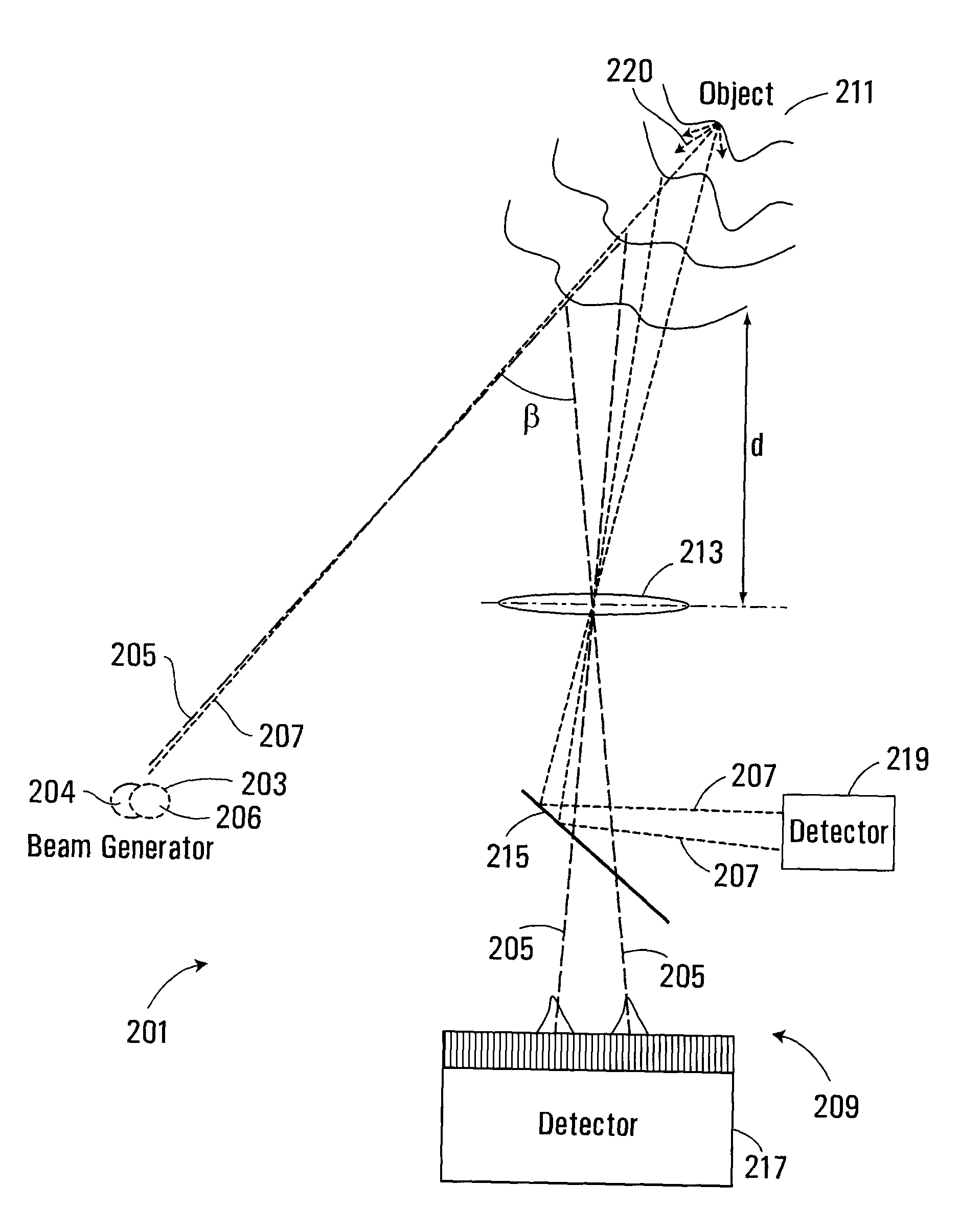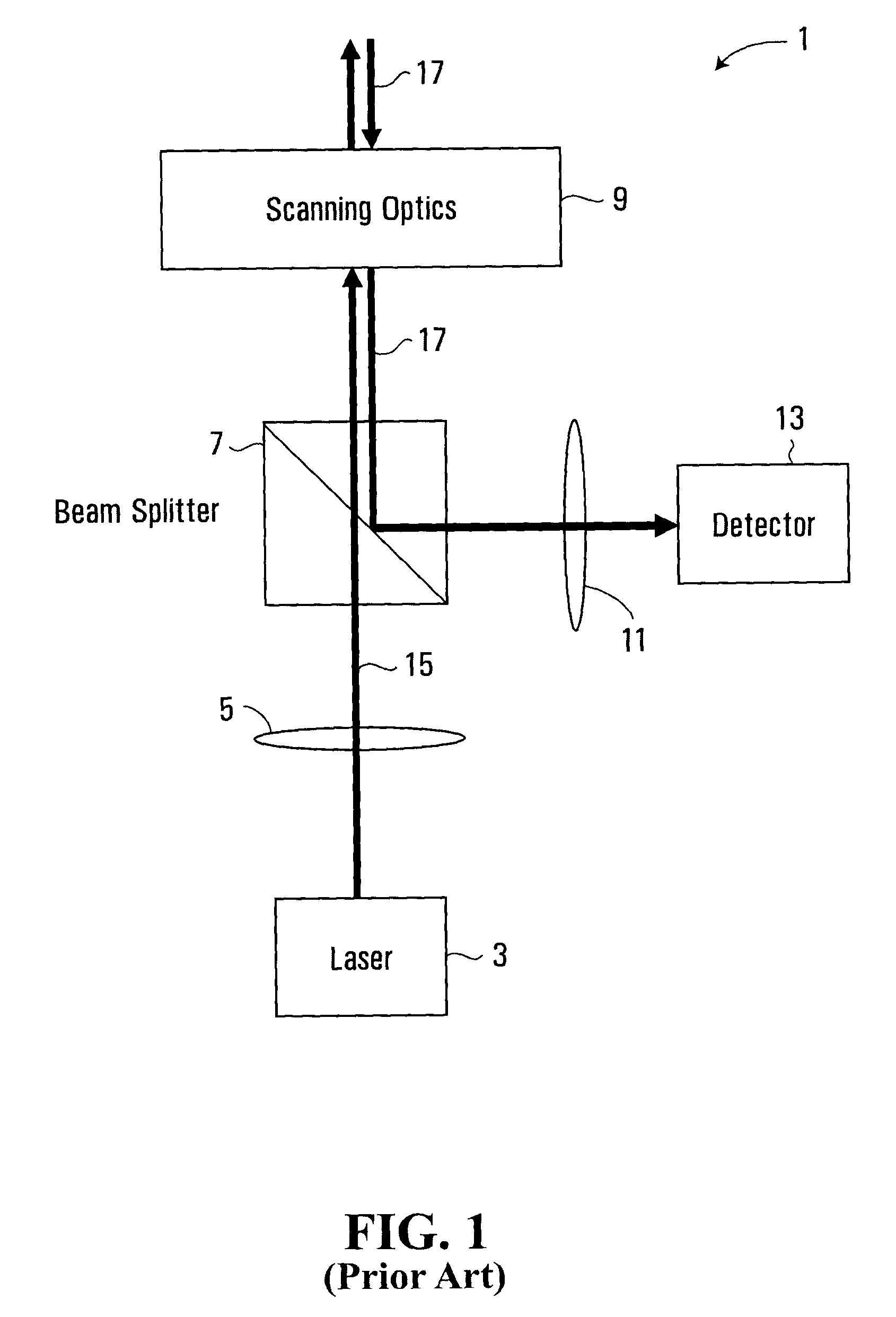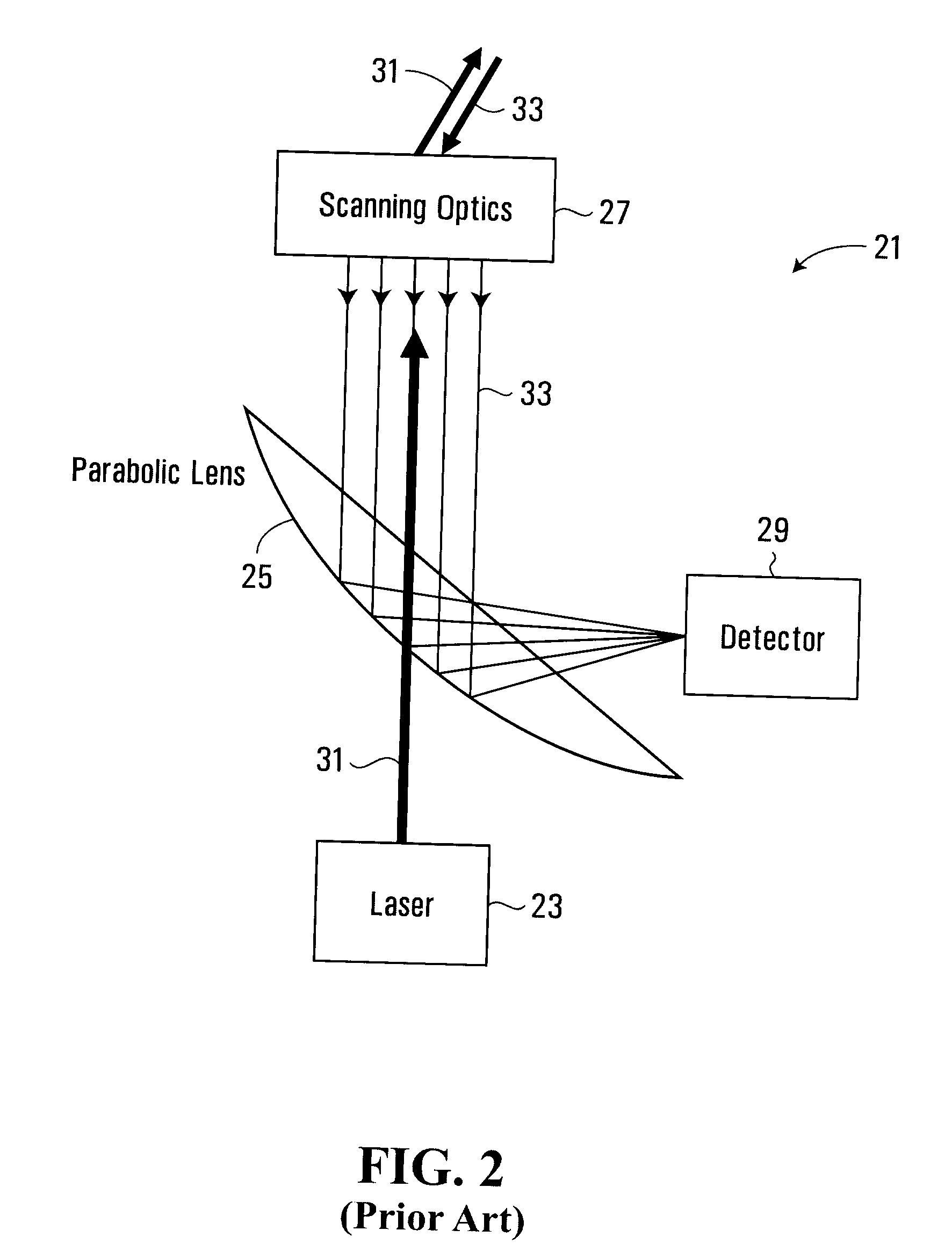Apparatus and method for tracking an object
- Summary
- Abstract
- Description
- Claims
- Application Information
AI Technical Summary
Benefits of technology
Problems solved by technology
Method used
Image
Examples
Embodiment Construction
[0055]FIG. 6 shows an apparatus according to an embodiment of the present invention. The apparatus 201 comprises a beam generator 203 for generating first and second beams of energy 205, 207 and a receiving system 209 for receiving beam energy from the first and second beams reflected from an object 211 spaced from the apparatus. In this embodiment, the receiving system comprises a collection lens 213 for receiving beam energy scattered from the object and for imaging (e.g. focussing) the received beam energy, a beam separator 215 for spatially separating the first and second beams 205, 207 reflected from the object, and first and second detectors 217, 219 for detecting the first and second beams, respectively. It will be appreciated that for a diffuse surface, the incident beams will be scattered by the surface as shown by the ray lines 220, for example, and a portion of the scattered radiation will be received and imaged by the lens 213 (or other device). It is this portion of the...
PUM
 Login to View More
Login to View More Abstract
Description
Claims
Application Information
 Login to View More
Login to View More - R&D
- Intellectual Property
- Life Sciences
- Materials
- Tech Scout
- Unparalleled Data Quality
- Higher Quality Content
- 60% Fewer Hallucinations
Browse by: Latest US Patents, China's latest patents, Technical Efficacy Thesaurus, Application Domain, Technology Topic, Popular Technical Reports.
© 2025 PatSnap. All rights reserved.Legal|Privacy policy|Modern Slavery Act Transparency Statement|Sitemap|About US| Contact US: help@patsnap.com



